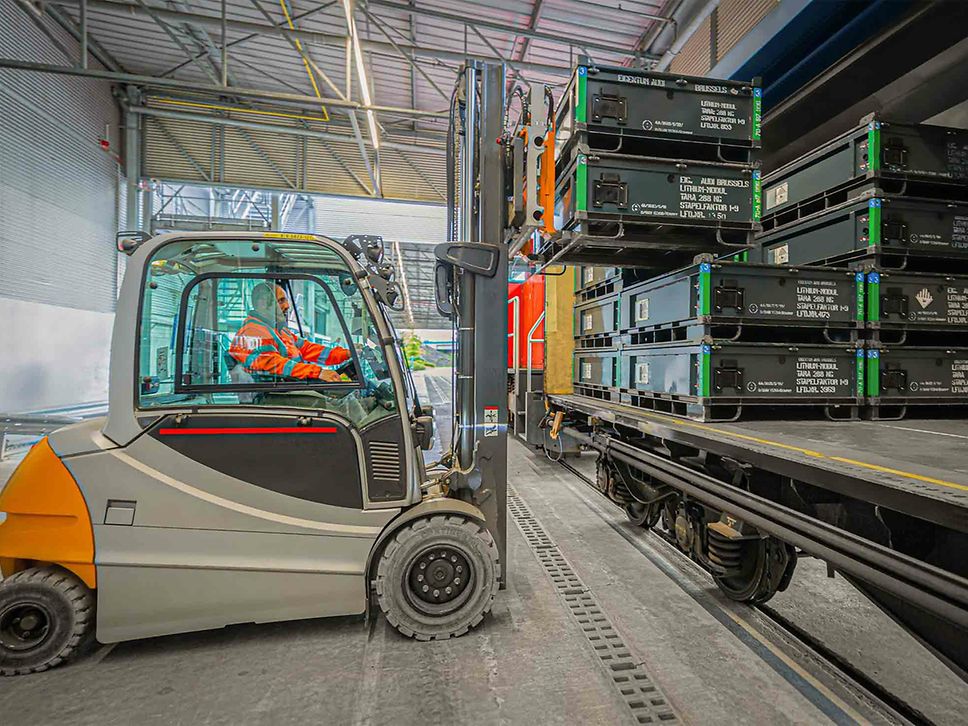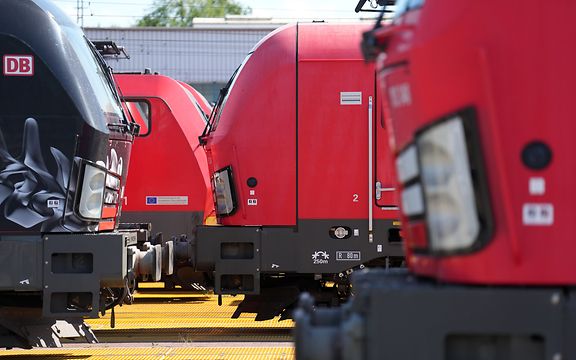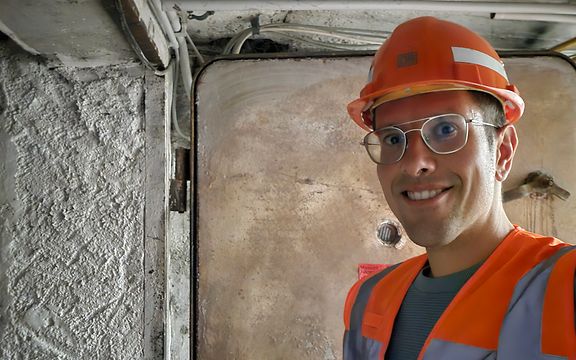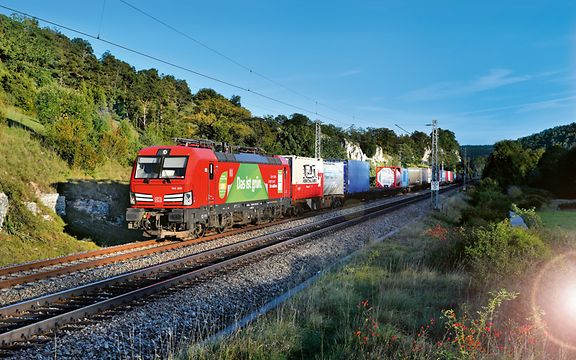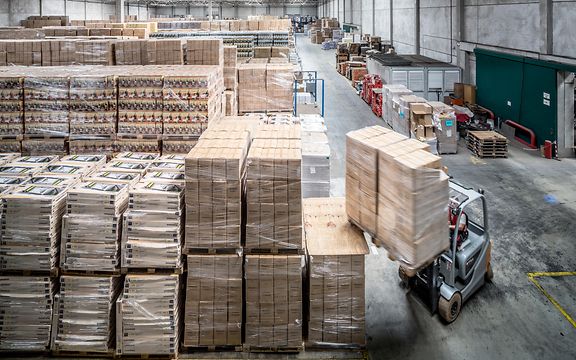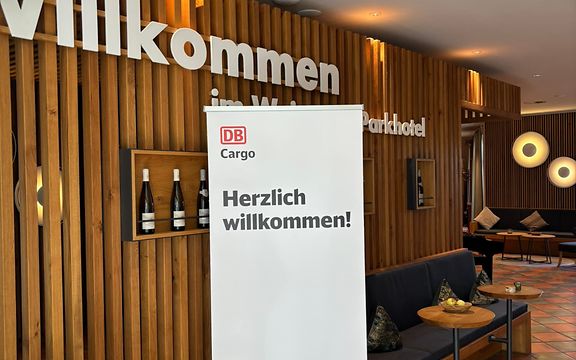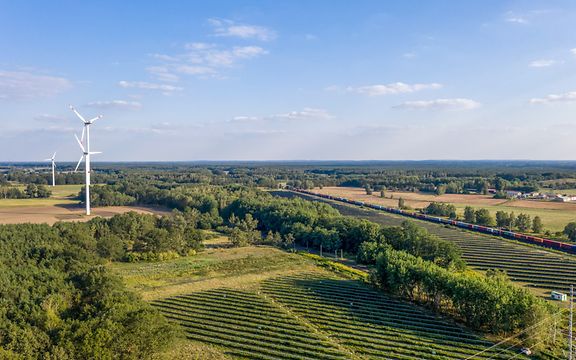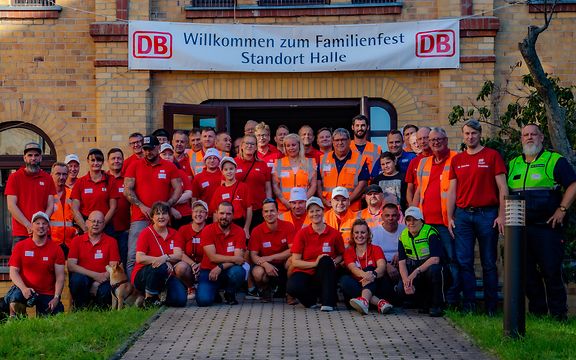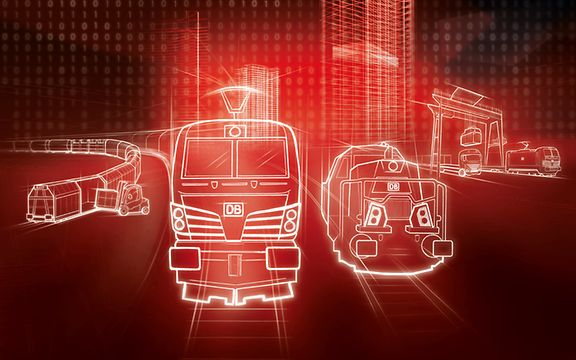A full load of green mobility
Győr Logistics Centre: the starting point for rail-based battery transports for Audi.
Electric vehicles are seen as a major component of the decarbonisation of energy and transport. However, it is essential that we not only consider the cars themselves but also their carbon footprint, which includes production and supply chains. And when it comes to supply chains, the transport of battery modules plays an important role. In the past, cells were often transported across Europe by heavy goods vehicle, but now the trend is towards transporting them to their destination by environmentally friendly rail.
Shifting transport from road to rail: Audi leads the way
Audi is one of the pioneers of this trend. It recently began transporting battery modules and cells produced in Hungary by rail directly to the Audi plant in Brussels, where the Audi e-tron and Audi e-tron Sportback are manufactured. DB Cargo is also playing a role – and not only with the transport itself. Since the Hungarian supplier of the battery modules does not have its own private siding, a new battery logistics hall was promptly built for the transports at the Győr Logistics Centre so the cells can be protected from the elements while being safely transferred from HGVs to rail. The first batteries were transhipped for Audi at the beginning of May.
Immense potential for cutting CO2
"Since then, we have gradually switched our transports to rail. We are currently handling two to three freight wagons a week on the Győr–Brussels route via our Automotive RailNet. Our target is 16 to 18 wagons a week," says Account Manager Robert Richter, who is involved in the project at DB Cargo Logistics. Felix Drygala, also an Account Manager at DB Cargo Logistics, illustrates the immense potential of this new supply chain concept: "Previously 12 to 15 HGVs loaded with battery modules travelled the 1,300 kilometre route across Europe every day – a considerable number. Shifting to rail will also reduce CO2 emissions by up to 2,600 metric tons a year."
Two-year planning phase
The starting signal for the switch to freight trains was given almost two years ago. At that time, Audi's concern was to make the battery logistics supply chain from Hungary as carbon neutral as possible. No sooner said than done: "At that time, we started planning the solution together with our colleagues from DB Cargo Hungária, and there were a number of questions to answer. What volumes should be expected? How can we safely tranship the sensitive battery modules to the rail? Where will transhipment take place? And which project partners should be brought on board?" explains Richter. After extensive tests and checks, implementation began at the end of 2021. Completed in May 2022, a new hall was built using lightweight construction techniques on the premises of DB Cargo Hungária – making the Győr Logistics Centre fit for battery transhipment. "A tight schedule, but we were able to keep to it," says Drygala.

Hand in hand for the Logistics Centre
This rapid, successful implementation was down to the project team consisting of employees from DB Cargo, DB Cargo Logistics, DB Cargo Hungária, and DB Schenker Austria and Hungary. "We also had help from outside from a Hungarian trucking company that proved to be extremely flexible," Drygala adds. Gerald Wohlfarth, project manager at Audi, agrees: "The good communication and the agile cross-border collaboration were important factors that contributed to the project's success. We were also able to work on the project digitally, which made coordination efficient and environmentally friendly."
Expansion already in planning
Of course the expansion of the Győr Logistics Centre will not only benefit Audi. The new transhipment hall and perfect access point to the Automotive RailNet will also make it easier for other customers to shift goods to environmentally friendly rail. According to Dr Jan Busch, CEO of DB Cargo Hungária, "The infrastructure of our Logistics Centre is absolutely fit for the future. We can currently handle up to ten freight wagons a day. We are already planning to expand the Logistics Centre to add a large hall and another track, which will increase capacity."
Learn more about transports from Hungary to Brussels
Pre-carriage of the battery modules involves transporting them by HGV to the logistics centre in Győr, almost 150 kilometres away. There, they are transferred to rail while being protected from the elements. The freight wagons then set off on the approximately 1,300 kilometre journey to Brussels – directly to the Audi plant, where a disused private siding has been put back in service specifically for this purpose. After the battery and cell modules are unloaded, the freight wagons return to Győr with the empty battery racks. There, the racks are loaded onto HGVs and taken back to the battery manufacturer – who fills them again with new battery modules and cells.
